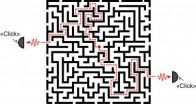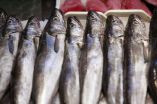(Press-News.org) The study conducted by the Vall d'Hebron Institute of Oncology (VHIO) in conjunction with the GEICAM cooperative group and other American and Canadian researchers has led to a change in the definition of hormone-sensitive breast tumours.
Barcelona, 20 December 2012. Gene expression in breast cancer provides valuable biological information for better determining the diagnosis, treatment, risk of relapse and survival rate. However, the most common form of characterizing breast cancer is by histopathological techniques. This study, headed by Dr Aleix Prat, Head of the Translational Genomics Group at the Vall d'Hebron Institute of Oncology (VHIO) and an oncologist at the Breast Cancer Unit of the Vall d´Hebron University Hospital, focused on hormone-sensitive breast tumours known as luminals. The study compared data on tumours obtained by gene expression with histopathological data and proposes a new definition which improves the current classification of these tumours in routine clinical practice.
This finding, published recently in the Journal of Clinical Oncology, changes the current definition of these tumours, guaranteeing improved diagnosis by minimizing classification errors and hence improving the therapeutic approach and prognosis of patients with this breast cancer subtype.
Gene expression: the "digital fingerprint" of tumours
In any breast cancer case, it is essential to establish its molecular subtype. In recent years, gene expression has identified two major groups of hormone-sensitive tumours known as Luminal A and Luminal B. Treatment is based on this classification and therefore needs to be extremely precise. "Luminal A tumours have a good prognosis with hormone treatment, while Luminal B tumours have a less optimistic prognosis and in most cases require chemotherapy. The problem lies in the fact that the current method for defining these groups by histopathological data is not perfect, and we therefore need an additional parameter to help us yet further fine-tune the histopathological diagnosis of Luminal A and B tumours," explains Dr Aleix Prat, leader of the study.
At present, the way of defining luminal or hormone-sensitive tumours is by testing positive to hormone receptors and negative to HER2 expression. The difference between a Luminal A and Luminal B tumour is the amount of Ki-67 protein detected by the pathologist in the tumour cells. If the tumour has fewer than 14% Ki-67-positive cells, it is classified as Luminal A. The problem with this definition of subtype Luminal A is that 30% of these tumours are actually shown as Luminal B by gene expression and hence have an unfavourable prognosis with hormone treatment alone.
A study offering diagnostic improvements
This study checked thousands of tumours from three independent groups from Spain (GEICAM cooperative group, Dr. Martín), Canada (University of British Columbia, Dr. Nielsen) and USA (University of North Carolina, Dr. Perou), to compare whether histopathological data matches the profiles of gene expression, and detected some major discrepancies. Once these differences had been identified, the team sought a new parameter that could be measured in the laboratory to fine-tune the definition. "The genomic study we conducted has shown that the amount of progesterone receptor is important in distinguishing the two biological entities. We can use this new variable as a marker to improve the current histopathological definition of Luminal A tumours," explains Dr Prat. The higher the number of tumour cells that are progesterone-receptor positive, the more likely it is that the diagnosis will be a Luminal A tumour.
The new histopathological definition of Luminal A tumours proposed by this study is "hormone receptor positive, negative HER2 expression, Ki-67-positive lower than 14% and progesterone-receptor positive higher than 20%," specifies Dr Prat.
Gene expression remains key
The method that unquestionably provides the most accurate and comprehensive information on each tumour are gene expression techniques. "Compared with histopathological data, tests based on gene expression techniques provide us with a more accurate molecular profile of each tumour and a more detailed estimate of the probability of relapse. The reason for this is that instead of determining three or four markers, we are assessing thousands of markers in one go. Having said that, these genomic techniques are not readily available in routine clinical practice," says Dr Aleix Prat, who was recently awarded the International Award for Breast Cancer Research for his work in bringing gene expression techniques closer to routine clinical practice. "In this study we evaluated a genomic test known as PAM50 which, in contrast to the other tests available, allow us to better characterise breast cancer at a biological level," continues Dr Prat. The VHIO is hoping to make this test available in 2013.
###
Further information:
Amanda Wren
Communication Manager
Vall d'Hebron Institut d'Oncologia (VHIO)
Tel. +34 695 207886 | Email: awren@vhio.net
Gene expression improves the definition of a breast cancer subtype
2012-12-20
ELSE PRESS RELEASES FROM THIS DATE:
2 problems in chemical catalysis solved
2012-12-20
The research group of Professor Petri Pihko at the Department of Chemistry and the NanoScience Center of the University of Jyväskylä has solved two acute problems in chemical catalysis. The research has been funded by the Academy of Finland.
In the first project, the researchers designed a novel intramolecularly assisted catalyst for the synthesis of beta amino acids. Previously published catalysts work only with aromatic side chains in the imines, but the new catalyst designed at Jyväskylä does not have this limitation. The new method might find uses in the synthesis ...
Stroke drug kills bacteria that cause ulcers and tuberculosis
2012-12-20
Bethesda, MD—A drug currently being used to treat ischemic strokes may prove to be a significant advance in the treatment of tuberculosis and ulcers. In a new research report appearing online in The FASEB Journal, a compound called ebselen effectively inhibits the thioredoxin reductase system in a wide variety of bacteria, including Helicobacter pylori which causes gastric ulcers and Mycobacterium tuberculosis which causes tuberculosis. Thioredoxin and thioredoxin reductase proteins are essential for bacteria to make new DNA, and protect them against oxidative stress caused ...
UGA research offers new targets for stroke treatments
2012-12-20
Athens, Ga. – New research from the University of Georgia identifies the mechanisms responsible for regenerating blood vessels in the brain.
Looking for ways to improve outcomes for stroke patients, researchers led by the UGA College of Pharmacy assistant dean for clinical programs Susan Fagan used candesartan, a commonly prescribed medication for lowering blood pressure, to identify specific growth factors in the brain responsible for recovery after a stroke.
The results were published online Dec. 4 in the Journal of Pharmacology and Experimental Therapeutics.
Although ...
Virtual reality and robotics in neurosurgery -- promise and challenges
2012-12-20
Philadelphia, Pa. (December 20, 2012) – Robotic technologies have the potential to help neurosurgeons perform precise, technically demanding operations, together with virtual reality environments to help them navigate through the brain, according to a special supplement to Neurosurgery, official journal of the Congress of Neurological Surgeons. The journal is published by Lippincott Williams & Wilkins, a part of Wolters Kluwer Health.
"Virtual Reality (VR) and robotics are two rapidly expanding fields with growing application within neurosurgery," according to an introductory ...
The paths of photons are random -- but coordinated
2012-12-20
Researchers at the Niels Bohr Institute have demonstrated that photons (light particles) emitted from light sources embedded in a complex and disordered structure are able to mutually coordinate their paths through the medium. This is a consequence of the photons' wave properties, which give rise to the interaction between different possible routes. The results are published in the scientific journal, Physical Review Letters.
The real world is complex and messy. The research field of photonics, which explores and exploits light, is no exception, and in, for example, biological ...
Italian wolves prefer pork to venison
2012-12-20
Some European wolves have a distinct preference for wild boar over other prey, according to new research.
Scientists from Durham University, UK, in collaboration with the University of Sassari in Italy, found that the diet of wolves was consistently dominated by the consumption of wild boar which accounted for about two thirds of total prey biomass, with roe deer accounting for around a third.
The study analysed the remains of prey items in almost 2000 samples of wolf dung over a nine year period and revealed that an increase in roe deer in the wolf diet only occurred ...
33 new trapdoor spider species discovered in the American southwest
2012-12-20
A researcher at the Auburn University Museum of Natural History and Department of Biological Sciences has reported the discovery 33 new trapdoor spider species from the American Southwest. These newly described species all belong to the genus Aptostichus that now contains 40 species, two of which are already famous – Aptostichus stephencolberti and Aptostichus angelinajolieae.
The genus now includes other such notable species as Aptostichus barackobamai, named for Barack Obama, the 44th President of the United States, and reputed fan of Spiderman comics; Aptostichus edwardabbeyi, ...
Cellphone data helps pinpoint source of traffic tie-ups
2012-12-20
CAMBRIDGE, Mass. -- In most cities, traffic growth has outpaced road capacity, leading to increased congestion, particularly during the morning and evening commutes. In 2007, congestion on U.S. roads was responsible for 4.2 billion hours of additional travel time, as well as 2.8 billion gallons of fuel consumption and an accompanying increase in air pollution.
One way to prevent traffic tie-ups is to have fewer cars on the road by encouraging alternatives such as public transportation, carpooling, flex time and working from home. But a new study — by researchers at MIT, ...
Spanish consumers prefer national fish
2012-12-20
What is most important when buying fish: the price, the country of origin, whether it is fresh or frozen or whether it is wild or farm-raised? The average Spanish consumer prefers above all that their fish comes from Spain, according to a study published in the 'Food Quality and Preference' journal. Spain is the largest producer of fish in the European Union but in recent years its population has consumed less fish, especially seafood.
A team of scientists brought together nearly 900 consumers from nine Autonomous Communities (Andalusia, Asturias, the Balearic Islands, ...
MIT researchers discover a new kind of magnetism
2012-12-20
CAMBRIDGE, Mass. -- Following up on earlier theoretical predictions, MIT researchers have now demonstrated experimentally the existence of a fundamentally new kind of magnetic behavior, adding to the two previously known states of magnetism.
Ferromagnetism — the simple magnetism of a bar magnet or compass needle — has been known for centuries. In a second type of magnetism, antiferromagnetism, the magnetic fields of the ions within a metal or alloy cancel each other out. In both cases, the materials become magnetic only when cooled below a certain critical temperature. ...


